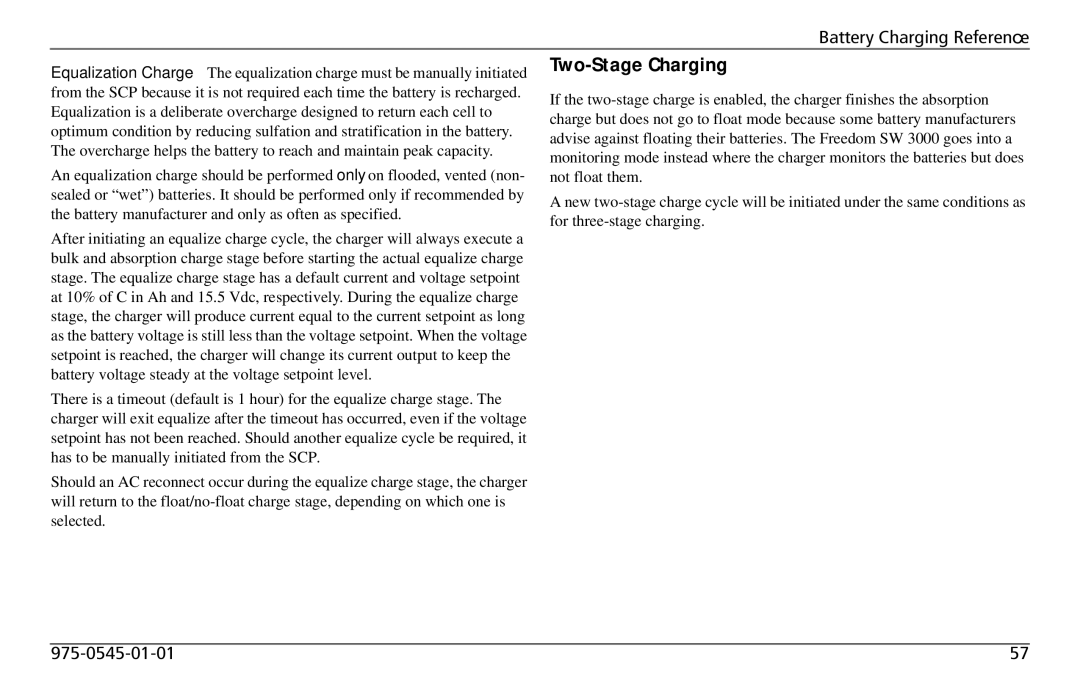Battery Charging Reference
Equalization Charge The equalization charge must be manually initiated from the SCP because it is not required each time the battery is recharged. Equalization is a deliberate overcharge designed to return each cell to optimum condition by reducing sulfation and stratification in the battery. The overcharge helps the battery to reach and maintain peak capacity.
An equalization charge should be performed only on flooded, vented (non- sealed or “wet”) batteries. It should be performed only if recommended by the battery manufacturer and only as often as specified.
After initiating an equalize charge cycle, the charger will always execute a bulk and absorption charge stage before starting the actual equalize charge stage. The equalize charge stage has a default current and voltage setpoint at 10% of C in Ah and 15.5 Vdc, respectively. During the equalize charge stage, the charger will produce current equal to the current setpoint as long as the battery voltage is still less than the voltage setpoint. When the voltage setpoint is reached, the charger will change its current output to keep the battery voltage steady at the voltage setpoint level.
There is a timeout (default is 1 hour) for the equalize charge stage. The charger will exit equalize after the timeout has occurred, even if the voltage setpoint has not been reached. Should another equalize cycle be required, it has to be manually initiated from the SCP.
Should an AC reconnect occur during the equalize charge stage, the charger will return to the
Two-Stage Charging
If the
A new
57 |
